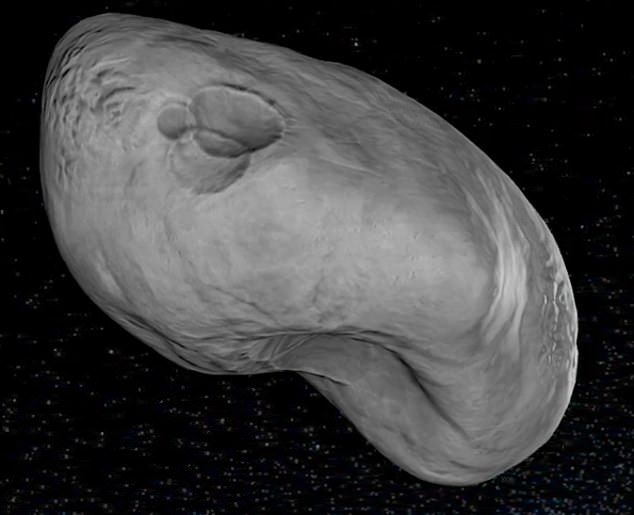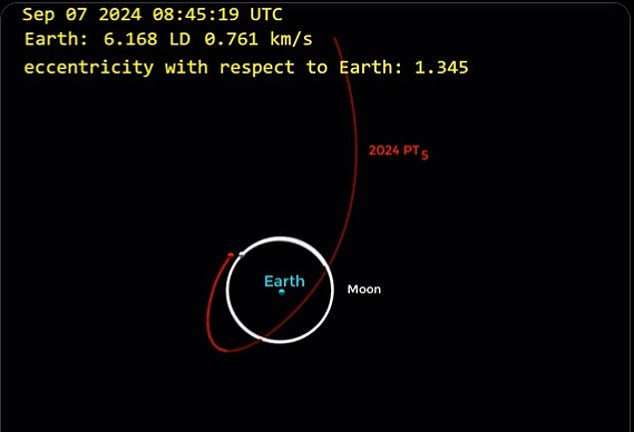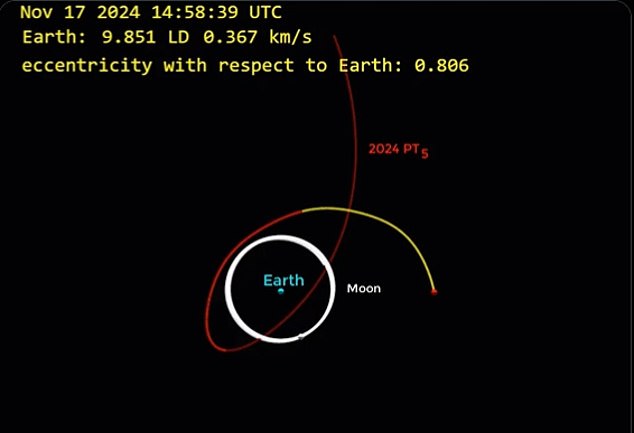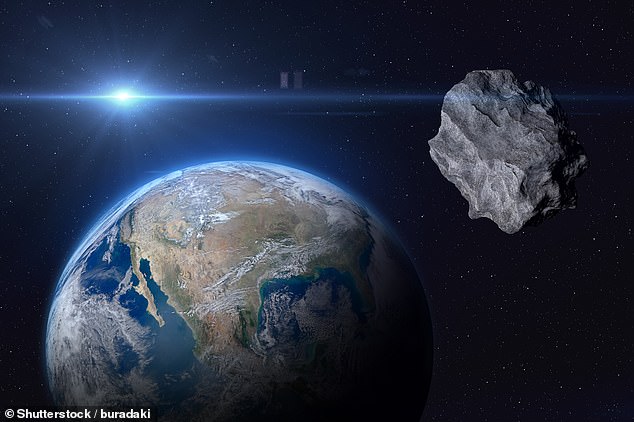Earth is about to gain a new cosmic companion as a small asteroid is on track to enter our planet’s orbit in about two months.
Starting on September 29, this “mini-moon” will make a single orbit around Earth before moving on to other regions of the solar system.
This 33-foot-wide asteroid, now named 2024 PT5, was first detected on August 7 by NASA’s Asteroid Terrestrial-impact Last Alert System (ATLAS), which can be seen using certain telescopes.
Researchers tracked the path of the “mini-moon” and found that it will briefly remain in Earth’s gravitational field until November 25.
Asteroid 2024 PT5 will enter Earth’s orbit as a ‘mini-moon’ from September 29 to November 25 (stock)

Astronomers have created a simulation of what the asteroid looks like in space.
When near-Earth objects (asteroids and comets) come within 45 million kilometers of Earth’s orbit, they follow a horseshoe-shaped trajectory.
The orbit brings objects closer to our planet at a low relative speed, which temporarily traps them in Earth’s orbit, as 2024 PT5 will do.
Previous research had shown that this space rock posed no threat to Earth, but asteroid dynamics researchers at the Complutense University of Madrid suspected that it could temporarily settle in Earth’s gravitational field.
Researchers analyzed data on the asteroid’s size, speed and trajectory to approximate its path during the two months following its discovery in August.
The study found that the space rock would enter Earth’s orbit as a mini-moon from Sept. 29 to Nov. 25, orbiting our planet once for 53 days before escaping back into space.
Tony Dunn, an amateur astronomer who creates orbit simulations, posted an animation of the path 2024 PT5 will follow as it orbits our planet. Dunn was not involved in the study.
Observing the asteroid’s path also allowed researchers to trace its origin.
They concluded that it most likely came from the Arjuna asteroid belt, a group of many asteroids with orbits around the Sun similar to Earth’s.

Tony Dunn, an amateur astronomer who creates orbit simulations, posted an animation of the path 2024 PT5 will take as it orbits our planet.

The asteroid will orbit our planet once before escaping back into space.
The researchers published their findings In the diary Research Notes from the American Astronomical Society.
But Paul Chodas, director of the Center for Near-Earth Object Studies at NASA’s Jet Propulsion Laboratory (JPL), who was not involved in the study, told the The New York Times that 2024 PT5 may have a different origin story.
The asteroid’s past motions suggest that “it’s possibly a piece of ejecta from an impact on the moon,” Chodas said, meaning this mini-moon could be a fragment that broke off from our current moon.
Asteroid 2024 PT5 is not the first to stay close to our planet for a while. In fact, this space rock is following a similar trajectory to that of a previous asteroid called 2022 NX1, which became a mini-moon for a brief period in 2022.
However, there is some disagreement over whether this asteroid is technically considered a true minimoon. To be considered one, an asteroid must complete at least one full orbit around Earth.
“It’s probably not going to complete a full revolution in the Earth-Moon system this fall, so I’m not sure I’d classify it as a minimoon,” Lance Benner, principal investigator for the asteroid radar survey program at NASA’s JPL, told the NYT. He was not involved in the study.
Regardless of how we classify this visiting orbiter, asteroids like 2024 PT5 serve as a reminder of all the celestial traffic whizzing past Earth and the importance of studying its interactions with our planet.

